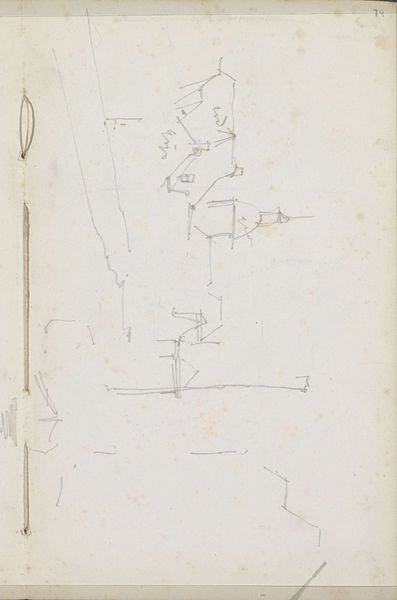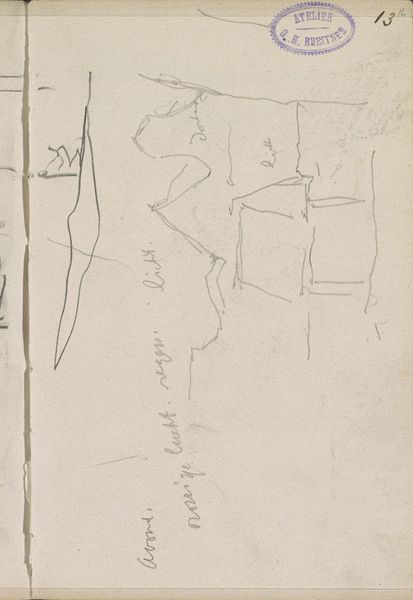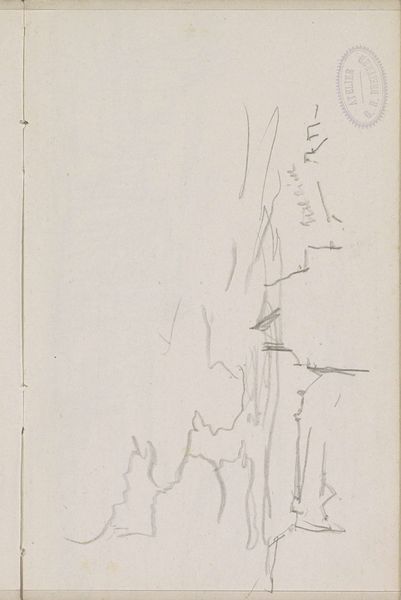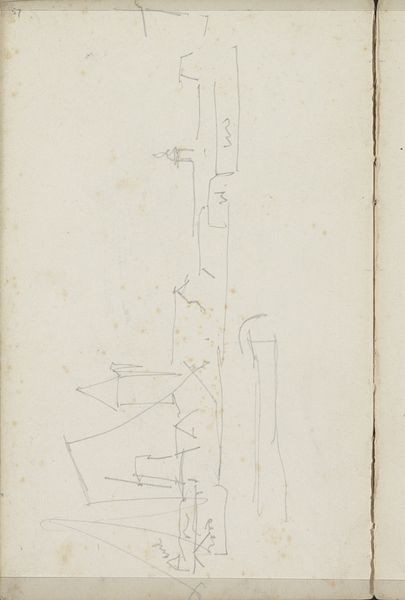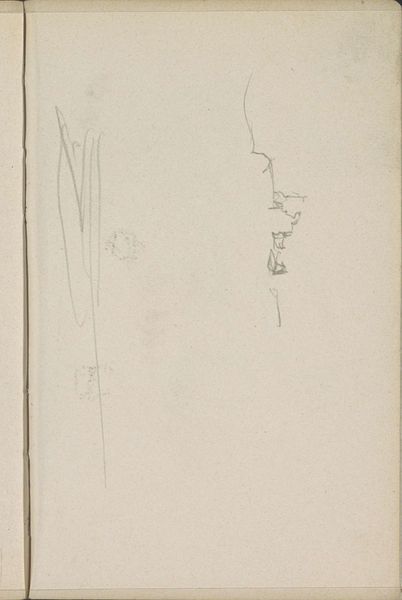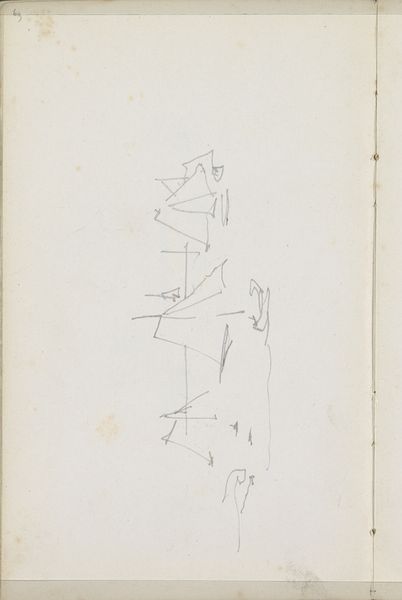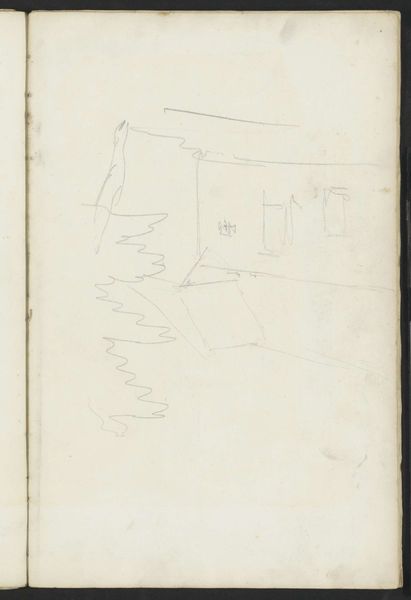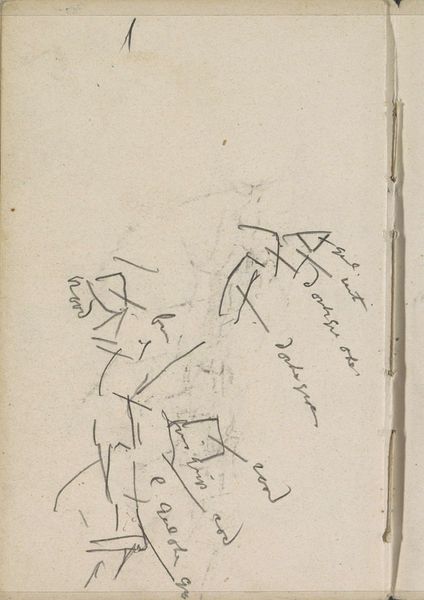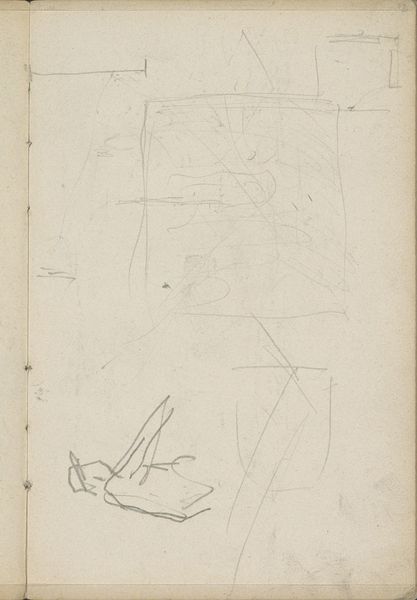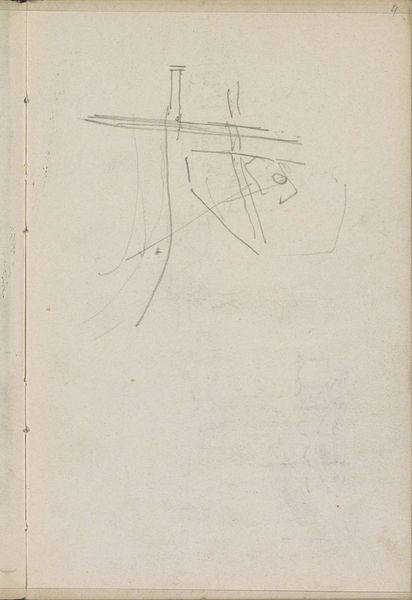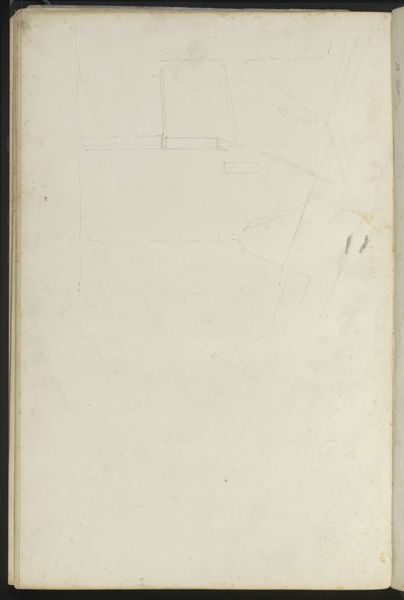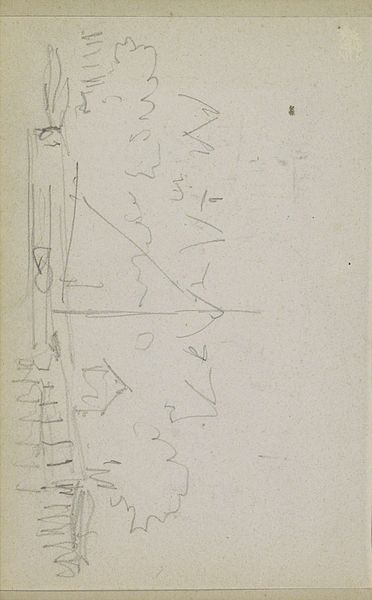
drawing, paper, pencil
#
drawing
#
amateur sketch
#
aged paper
#
toned paper
#
light pencil work
#
incomplete sketchy
#
landscape
#
paper
#
personal sketchbook
#
sketch
#
pencil
#
sketchbook drawing
#
sketchbook art
Copyright: Rijks Museum: Open Domain
Curator: Here we have "Huizen," or "Houses," a pencil drawing by Willem Koekkoek, dating sometime between 1849 and 1895. Editor: It's… wispy. A ghost of a drawing, really. Makes me think of fleeting moments captured in a private sketchbook. Curator: Indeed. Note the aged paper. Koekkoek uses a very light pencil work to render these buildings. It’s definitely incomplete and sketchy; evidence of a quickly executed study, a fleeting impression caught on paper. We can almost feel the pressure of pencil on paper and see it come to life. Editor: This feels more like a document of labor than an aesthetic object. What social circumstances might prompt such a study? Was it for later works or sketches of urban transformation during that time period? Curator: It may very well be. Consider that Koekkoek's career coincided with massive urbanization across Europe. Drawings such as this could serve as records, informing both paintings and, potentially, discussions around urban planning and architecture within his social circle. It becomes a tool, doesn’t it? Editor: Precisely! And looking at the quality of the sketch versus the material, it feels quite mundane. Toned paper can reflect economy. Maybe these houses have greater context with understanding urban migration or something along these lines. It all brings to question art history! Curator: And of course, this all ends up here at the Rijksmuseum. Where it takes on different public dimensions than being privately viewed or shown, highlighting the art’s continuous life, if you will. Editor: Absolutely. Seeing something so ephemeral gives insight to how a person consumes, produces, and places images. It provides different forms of value from aesthetic or economic worth and places Koekkoek into an urban fabric. Curator: Ultimately, what's left is a glimpse. A tangible reminder of an artist observing and engaging with their built environment. Editor: Yes, beyond aesthetics; seeing beyond these forms questions value systems and reevaluates the material.
Comments
No comments
Be the first to comment and join the conversation on the ultimate creative platform.
